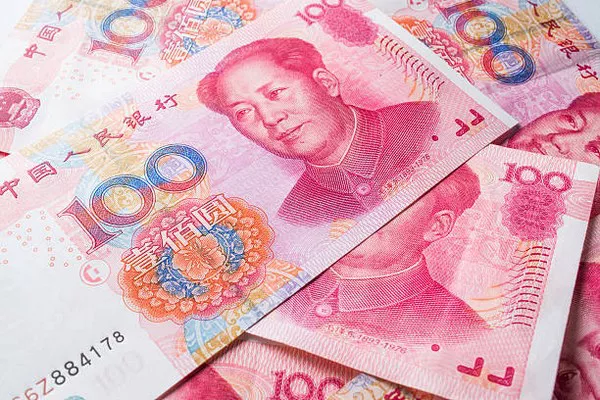The 100 Chinese Yuan banknote, a prominent denomination in the country’s currency, not only serves as a medium of exchange but also holds significant cultural value. Beyond its economic function, the banknote features iconic figures and symbols that reflect China’s rich history and cultural heritage. In this article, we will delve into the personalities depicted on the 100 Chinese Yuan banknote and explore the stories behind these influential individuals.
Front Side:
The front side of the 100 Chinese Yuan banknote prominently features the image of Mao Zedong, the founding father of the People’s Republic of China. Mao Zedong, also known as Chairman Mao, played a pivotal role in shaping modern China through the establishment of the Communist Party and leading the country to victory in the Chinese Civil War. Born in 1893, Mao’s revolutionary ideals and leadership have left an indelible mark on China’s political landscape.
Surrounding Mao’s portrait on the banknote are intricate designs, including the national emblem of China, which features Tiananmen Gate under five stars, representing the unity of the Chinese people under the leadership of the Communist Party. The national emblem is a symbol of China’s sovereignty and the principles upon which the nation was founded.
Back Side:
The reverse side of the 100 Chinese Yuan banknote showcases a picturesque scene featuring the iconic Yellow Mountains, known as Huangshan in Chinese. These majestic peaks, located in Anhui province, have been a source of inspiration for poets, artists, and philosophers throughout Chinese history. The inclusion of Huangshan on the banknote reflects the appreciation of China’s natural beauty and the recognition of the country’s cultural and artistic achievements.
To complement the scenic landscape, the banknote features an image of a water buffalo, an animal that has played a crucial role in Chinese agriculture for centuries. The water buffalo symbolizes hard work, diligence, and the close relationship between humans and nature in traditional Chinese farming practices.
Security Features:
In addition to its aesthetic and historical elements, the 100 Chinese Yuan banknote incorporates advanced security features to prevent counterfeiting. These features include a holographic stripe, watermark, and a security thread. The combination of artistic representation and modern security measures underscores China’s commitment to both preserving its cultural heritage and ensuring the integrity of its currency.
Cultural Significance:
The individuals and symbols depicted on the 100 Chinese Yuan banknote represent more than historical figures and scenic landscapes—they embody China’s cultural identity and the values that have shaped the nation over the centuries. Mao Zedong, as the central figure, symbolizes the foundation of modern China, while the Yellow Mountains and the water buffalo highlight the country’s deep-rooted connection to its natural environment.
The inclusion of these cultural elements on the banknote serves as a reminder of China’s rich history and the contributions of its people to the world. It also reflects the nation’s commitment to preserving its cultural heritage and promoting a sense of national pride among its citizens.
Historical Context:
To understand the significance of the personalities featured on the 100 Chinese Yuan banknote, it is crucial to delve into the historical context in which they lived and the impact they had on shaping the course of Chinese history.
Mao Zedong, born into a peasant family in Hunan province, emerged as a key figure in the early 20th century during a time of political upheaval and social change. His leadership in the Chinese Communist Party and the success of the communist forces in the Chinese Civil War led to the establishment of the People’s Republic of China on October 1, 1949.
While Mao’s leadership is acknowledged for unifying the country and modernizing its institutions, it is also important to recognize the complexities of his legacy, including the challenges and controversies that marked his rule, such as the Great Leap Forward and the Cultural Revolution.
The Yellow Mountains, featured on the reverse side of the banknote, have long been celebrated in Chinese art and literature. Renowned for their striking beauty, unique granite peaks, and ancient pine trees, the Yellow Mountains have inspired countless poets and artists, becoming a symbol of China’s natural wonders.
The water buffalo, a common sight in traditional Chinese agriculture, holds cultural significance as a symbol of hard work, perseverance, and the symbiotic relationship between humans and nature. As an integral part of rural life, the water buffalo represents the agricultural roots that have shaped China’s economy and society for centuries.
Conclusion:
The 100 Chinese Yuan banknote is not merely a piece of currency; it is a canvas that tells the story of China’s past, present, and future. Through the portraits of Mao Zedong, the depiction of the Yellow Mountains, and the symbolism of the water buffalo, the banknote encapsulates the nation’s history, cultural heritage, and aspirations.
As China continues to evolve on the global stage, the 100 Chinese Yuan banknote stands as a tangible link between the country’s ancient traditions and its modern identity. It serves as a reminder of the individuals and forces that have shaped China’s destiny and a testament to the enduring cultural richness that defines the nation.


